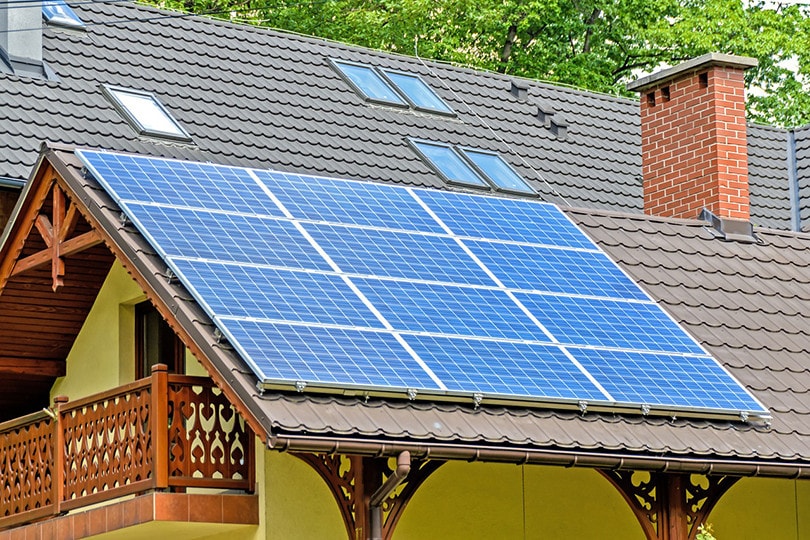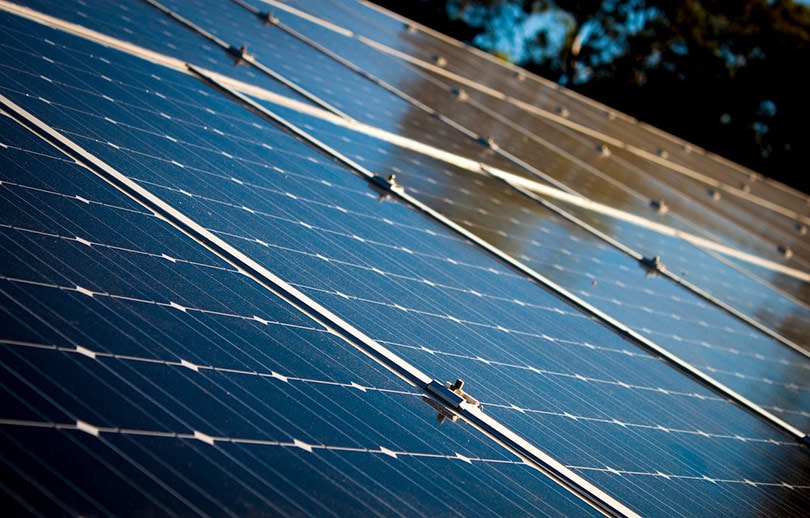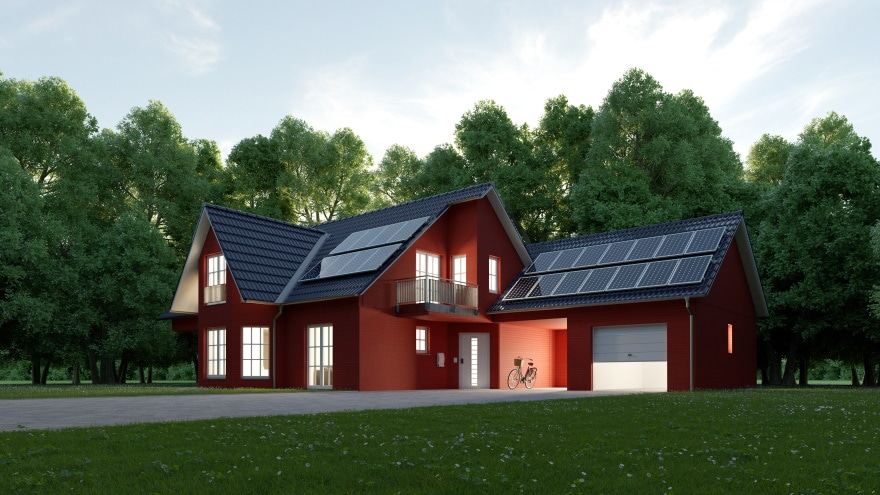Is Solar Worth It In Arizona? Costs & Benefits of Solar Panels In Arizona
-
Pete Ortiz
- Last updated:

The former governor of Arizona, Governor Janet Napolitano, once referred to this state as a state that has the potential to become the “Persian Gulf of Solar Energy.” And to be honest, she wasn’t wrong. How else would you describe it, seeing as it’s always taken the top spot when it comes to solar power generation in the country?
These are not mere speculations, but facts backed by statistics. If this is news to you, you should know Arizona currently produces approximately 6.5% of our nation’s solar power!
Anyway, today’s post is not meant to sell Arizona as a tourist destination, but to help you figure out whether or not solar panels are good for you and your business. We’ll be looking at the installation payback periods, costs, expected amount of energy, and of course, the benefits.
Is Solar Energy Worth It?
Before we get into all those nitty-gritty details, we just want you to know that it’s all worth it, and it couldn’t be possible without the offerings and policies that have been set up by various government agencies to ensure Arizona is a solar state.
- The Federal Solar Tax Incentive
- The removal of the solar added property value tax
- Sales tax exemptions
- The rebate schemes provided by utility businesses for solar purchases.

The Solar Federal Tax Credit
Just so we’re on the same page, the Investment Tax Credit is actually the Federal Solar Tax Credit. They are not two different incentives as some people purport. This tax credit is meant to allow you—and anybody else looking to install a solar energy system—to deduct 26% of your purchase costs from the federal tax. And it doesn’t just cover residential systems, but commercials as well. Furthermore, there is no cap whatsoever on its value.
As an Arizona resident, you should take advantage of the Investment Tax Credit incentive. It’s not there to take advantage of you but to help you save thousands of dollars in costs for taking the solar route.
Will the Federal Solar Tax Credit Expire?
The Federal Solar Tax Credit is the brainchild of the Energy Policy Act of 2005. And when it was formulated, it was set to only run for two years without an extension. But it didn’t quite yield the results the government hoped for, so a series of extensions kept on pushing the expiration date.
Its goal is and has always been to help the solar industry get to maturity. The government understands the magnitude of the impact such a development could bring, and that’s why it passed a spending bill that guarantees the tax credit will be available to all Arizona homeowners for a considerable time period.
- 2016 – 2019: Consumers still get to enjoy a major discount whenever they purchase and install a solar panel system. That discount will account for 30% of the system’s total cost.
- 2020 – 2022: Anyone who gets a new commercial or residential panel will be allowed to deduct 26% of the total system’s cost from their annual taxes.
- 2023: Residents who purchase commercial and residential panels will be given a 22% discount on any solar panel purchased. That discount will be deducted from their annual taxes.
- 2024 onwards: The 22% discount previously awarded to solar panel consumers will go down to 10%. Moreover, it will only be awarded to commercial solar energy system users, and not residential.
As a residential user, you’ll have to pay the full amount and grapple with a payback period that’s ridiculously long. It could even be decades depending on your financial situation.
Who Qualifies for the Investment Tax Credit?
Anyone who has or wants a solar energy system installed qualifies for the incentive. And you are allowed to “carry forward” any credit into the subsequent year, assuming you don’t have an adequate tax liability to claim all of it in one year.
There’s something else important that we feel obligated to share, as this is a mistake that most potential solar consumers make. Signing a PPA or lease with an installer doesn’t make you the legal owner of the system. So when you’re in the process of applying for the tax credit, you’ll get to a point where you’ll be disqualified.

The Arizona State Tax Incentive
On top of the federal tax credit that you’ll use to reduce the total cost of your solar panel device, we also have the Arizona tax credit. This incentive is being offered by the state government to homeowners looking to install residential solar systems—it doesn’t cover commercial systems.
In Arizona, this credit is often referred to as the Solar Energy Credit. A credit that reduces the cost of any panel system that costs $1000 or less, by 25%.
How Much Will You Save In Water Heating Costs?
We cannot really give you a ballpark figure, because the amount you end up spending or saving, in the long run, will hinge on a couple of factors. We’ll have to look at the effectiveness of your heating system, the amount of water being used, the costs of conventional fuels you would be relying on had you not gotten a solar system.
We’ll tell you this though; according to experts, your water heating bills are expected to drop by 50% to 80% from the moment you install the device. And seeing as you’ll be getting energy directly from the sun, you’ll be insulated from parameters that typically cause price hikes such as inflation and fuel shortages.
Installing a solar water heater in a new home is even more attractive economically, as opposed to installing one in a house that has gone through depreciation. You see on average, you’ll only be spending about $13 to $20 monthly to procure solar power, on a 30-year mortgage. That’s thanks to the federal income tax deduction policy.
The other important factor that we cannot forget to talk about is the climate. Arizona is a sunny state, so the weather is hot. That means you won’t be spending hours heating water the same way others do in states like Alaska, North Dakota, and Maine.
Frequently Asked Questions
Is it possible for solar panels in Arizona to run out of energy?
It’s virtually impossible for such a thing to happen because solar panels are powered by the sun’s energy. Can the sun run out of energy? Obviously not! It’s renewable, thus cannot be exhausted.
What about on cloudy days?
You’ll still be able to get sufficient power output on cloudy days if you’re using photovoltaic solar panels. They’ve been designed to generate electrical power using direct and indirect sunlight. The only difference is, with indirect sunlight, their production capacity will be far less efficient.

How many sunny days a year does Arizona have?
Arizona has roughly 211 sunny days a year, but the Total Days With Sun (TDWS) is 296. The TDWS is the sum of the number of sunny days and partly sunny days. The remaining days are considered overcast, with approximately 80% cloud cover.
What this means is, if you’re living in Arizona and considering taking the solar route, you’ll only have to look for an alternative energy source for 69 days. That’s only two months a year.
Does solar energy lower our carbon footprint?
Pollution is not something that only plagues our local governments. It’s a problem that the federal government has been grappling with as well—not to mention the rest of the world. We’re just fortunate enough to have people in government at the moment who understand the repercussions of not finding ways to mitigate this carbon dilemma.
Our solar panels have the ability to generate power with zero emissions. In fact, research experts have on several occasions reiterated that these devices have a carbon footprint that’s around 20 times less than that produced by sources powered by coal.
That’s like saying if we had a 5-kilowatt solar plant installed in a production facility, it would be possible to save more than 15,000 pounds of carbon dioxide per year—a contribution that will go a long way in fighting global warming and several other related issues.
Related Read: How Much Energy Does A Solar Panel Produce? What You Need to Know!
Final Thoughts
Is solar worth it in Arizona? Absolutely. The panels will not only help you save more money and reduce carbon emissions, but they’ll also increase your home’s value. In addition, something tells us they are destined to become heavy hitters in the near future.
Featured Image Credit: PhotoMIX-Company, Pixabay
Contents


